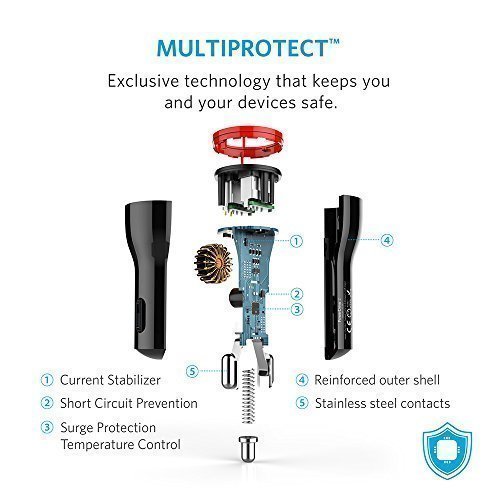NinjaNerd56 :
How about a follow up on factory installed USB ports?
That's what I have and use....
That would be interesting discussions with the dealerships or people I try to get to volunteer their vehicles from: "May I test your car's built-in USB ports please? I will only be running them at their maximum sustainable load for several minutes, test their maximum overload current, their short-circuit current, overheat protection, etc. Yes, any of these tests may potentially kill the ports."
jhansonxi :
The LDNIO resistor is using EIA96 code marking:
http://www.radio-electronics.com/info/data/resistor/smd_resistor/smt-resistor-markings-systems.php
E96 uses lower-case 'b' for the multiplier? With a 2.43k resistor, the current limit would have indeed been 5.1A, not the 17A (still wiring-limited) I measured. Something still isn't right in that circuit.
For the diodes, I didn't say that there was anything wrong with using one with excessive current rating. Going moderately overkill is actually good since higher current diodes have lower internal resistance. Too much overkill though and you pay the toll in increased junction capacitance and other parasitics.
Onus :
I've got some bullet ones that came with things, but haven't used them; now I won't.
That's probably a wise decision.
truerock :
Daniel,
I'm curious about this $99 adapter:
http://www.apple.com/shop/product/HJDQ2ZM/A/belkin-dual-car-power-valet-charger?fnode=85
Apple proves once again that sky is the limit for Apple device accessories' pricing by taking most of the competition's prices and raising them by more than 100%.
One problem with those fancy adapters (including QuickCharge 3 and USB-PD) is that I'll need a chip to fake the handshake and unlock the high current/voltage limits for testing.




